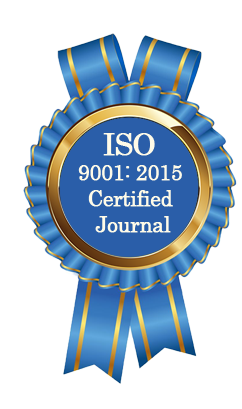| All | Since 2020 | |
| Citation | 105 | 60 |
| h-index | 4 | 4 |
| i10-index | 3 | 2 |
WJAHR Citation 
Login
News & Updation
Best Article Awards
World Journal of Advance Healthcare Research (WJAHR) is giving Best Article Award in every Issue for Best Article and Issue Certificate of Appreciation to the Authors to promote research activity of scholar.
Best Article of current issue
Download Article : Click here
Indexing
Abstract
RELATIONSHIP BETWEEN NECK CIRCUMFERENCE AND BODY MASS INDEX WITH DIABETES HYPERTENSION AND DYSLIPIDEMIA IN MALES
Dr. Haider Dhia AlBana and Dr. Ala Hussain Haider
ABSTRACT
Background: Increasing body mass index (BMI) is associated with diseases related to insulin resistance, hypertension, and dyslipidemia. The aim of this study was to examine the relationship between neck circumference and BMI with other cardiometabolic syndrome parameters. Method: A cross-sectional study was conducted on a randomly selected sample of 150 adult males visiting consulting clinics at Marjan Teaching Hospital from March 1, 2016, to January 1, 2017. The participants were divided into three groups based on neck circumference: 50 individuals with a neck circumference of less than 35 cm, 50 individuals with a neck circumference between 35 cm and 41 cm, and 50 individuals with a neck circumference greater than 41 cm. All participants underwent measurements of systolic and diastolic blood pressure, as well as BMI. Additionally, hemoglobin A1c (HbA1c) and lipid profile tests were conducted for all participants except for diabetic patients on antidiabetic medications and those on lipid-lowering drugs. Results: An increase in neck circumference among males was significantly associated with a higher BMI (p-value < 0.001). Neck circumference was also strongly correlated with increased systolic blood pressure and diastolic blood pressure (p-value < 0.001), total cholesterol (p-value = 0.009), LDL cholesterol (p-value = 0.019), triglycerides (p-value < 0.001), and HbA1c (p-value < 0.001), while it was inversely correlated with HDL cholesterol levels (p-value < 0.001). Conclusion: An increase in neck circumference is associated with metabolic diseases related to insulin resistance, hypertension, and dyslipidemia. Therefore, measuring neck circumference can serve as a simple, time-efficient, and non-invasive screening tool for assessing the risk of these disorders.
[Full Text Article] [Download Certificate]
